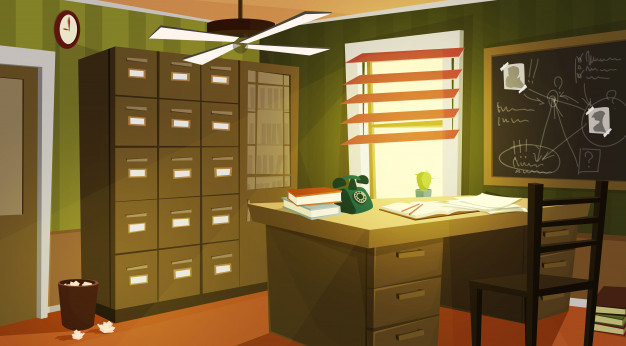 The commercial roofing industry is evolving rapidly, driven by advancements in technology, sustainability demands, and industry-specific requirements. For healthcare and retail industries, where the stakes are particularly high, these trends offer opportunities to enhance building performance, reduce operational costs, and ensure safety. Below, we explore the top trends shaping commercial roofing in these critical sectors.
The commercial roofing industry is evolving rapidly, driven by advancements in technology, sustainability demands, and industry-specific requirements. For healthcare and retail industries, where the stakes are particularly high, these trends offer opportunities to enhance building performance, reduce operational costs, and ensure safety. Below, we explore the top trends shaping commercial roofing in these critical sectors.
1. Sustainable Roofing Solutions
Sustainability is at the forefront of modern construction, and commercial roofing is no exception. In both healthcare and retail industries, energy-efficient roofing systems are gaining popularity due to their environmental and economic benefits.
- Cool Roofs: These roofs are designed to reflect more sunlight and absorb less heat, reducing the building’s energy consumption. For hospitals, this can lead to significant savings in cooling costs while maintaining a comfortable environment for patients and staff.
- Green Roofs: Green roofs, covered with vegetation, provide insulation, reduce urban heat islands, and improve air quality. Retailers benefit from the aesthetic appeal and the potential for creating unique customer experiences, such as rooftop gardens.
- Recyclable Materials: The use of recyclable roofing materials, such as metal and thermoplastic polyolefin (TPO), aligns with sustainability goals and reduces landfill waste.
2. Technology-Driven Roofing Systems
Innovative technologies are transforming how commercial roofs are designed, installed, and maintained.
- Smart Roofing Systems: Equipped with sensors, smart roofing systems can monitor temperature, moisture, and structural integrity. For healthcare facilities, these systems help ensure roofs remain secure and leak-free, protecting critical medical equipment and patient care areas.
- Drone Inspections: Drones are revolutionizing roof inspections, offering quicker and safer assessments. Retail businesses with expansive roofs benefit from the efficiency and detailed reporting drones provide.
- Building Information Modeling (BIM): BIM software enables detailed visualization and planning for commercial roofing projects, reducing errors and ensuring a tailored approach for hospitals and retail buildings.
3. Durable and Resilient Roofing Materials
Healthcare and retail buildings require roofs that can withstand harsh weather conditions, heavy foot traffic, and wear over time.
- TPO and PVC Roofing Membranes: These materials are popular for their durability, resistance to chemicals, and ease of maintenance. Hospitals benefit from their ability to handle mechanical systems and rooftop equipment.
- Impact-Resistant Materials: Retail buildings often experience damage from hail or falling debris. Impact-resistant materials, such as modified bitumen or metal roofing, offer added protection and reduce repair costs.
- Fire-Resistant Roofing: In healthcare settings, fire-resistant materials are critical to ensuring patient safety and meeting stringent building codes.
4. Customization for Industry Needs
Commercial roofing trends are moving towards highly customized solutions that address the unique needs of healthcare and retail industries.
- Healthcare-Specific Roofing: Hospitals require roofs that support heavy equipment, such as HVAC units and backup generators, while maintaining waterproofing and insulation. Roofing designs are tailored to minimize disruptions during installations and repairs to ensure patient safety.
- Retail-Specific Roofing: Retail spaces often prioritize aesthetics and branding. Custom roof designs that align with the brand’s identity, such as incorporating logos or specific color schemes, are becoming more common.
5. Enhanced Safety Standards
Safety is paramount for both healthcare and retail industries, influencing roofing trends and practices.
- Non-Toxic Materials: Hospitals require roofing materials free from harmful chemicals to ensure patient safety and indoor air quality.
- Slip-Resistant Surfaces: Retail roofs with pedestrian access or frequent maintenance needs are adopting slip-resistant materials to enhance worker safety.
- Compliance with Regulations: Both industries prioritize roofing systems that meet stringent industry standards and local building codes, reducing liability and ensuring operational continuity.
The Role of Hospital and Medical Commercial Roofers
Hospital and medical commercial roofers play a vital role in implementing these trends effectively. Their expertise ensures that healthcare facilities meet strict safety and operational standards while optimizing costs. From installing durable materials to integrating advanced technologies, these professionals are instrumental in creating roofing systems that support the critical functions of medical buildings. Collaboration with experienced roofers also ensures that disruptions to patient care are minimized during roofing projects, highlighting the importance of specialized knowledge in this field.
The Role of Retail Building Commercial Roofers
Retail building commercial roofers are equally essential in shaping the roofing landscape for retail spaces. These professionals focus on delivering solutions that balance functionality, durability, and aesthetic appeal. Retailers rely on their expertise to install and maintain roofing systems that support branding efforts while ensuring operational efficiency. Whether it’s incorporating energy-efficient materials, addressing weather resilience, or creating visually striking designs, retail roofers play a pivotal role in helping businesses maintain competitive and sustainable operations.
Conclusion
The commercial roofing industry is innovating to meet the evolving needs of healthcare and retail sectors. From sustainable materials to technology-driven solutions and industry-specific designs, these trends not only enhance building performance but also contribute to the overall goals of safety, efficiency, and sustainability. By staying ahead of these trends, healthcare facilities and retail businesses can invest in roofing systems that deliver long-term value and resilience.


